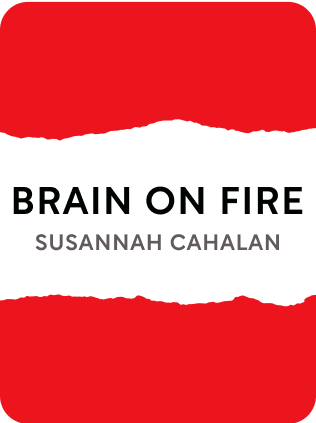

This article is an excerpt from the Shortform summary of "Brain On Fire" by Susannah Cahalan. Shortform has the world's best summaries of books you should be reading.
Like this article? Sign up for a free trial here .
What was Susannah Cahalan’s diagnosis in Brain on Fire? How did doctors figure it out?
Susannah Cahalan’s diagnosis was not easy to reach. It was a long struggle but they eventually doctors diagnosed her with anti-NMDA-receptor encephalitis.
Read more about Susannah Cahalan, diagnosis efforts, and what happened.
Mysterious Illness
Susannah awakes in the emergency room, Stephen by her side. When she sees a homeless man vomiting a few feet away and a bloody man handcuffed to a gurney, surrounded by police officers, she demands to be moved to another room. The doctor agrees, and she’s filled with a triumphant sense of power. En route to her new room, she inexplicably screams that she’s going to sue the MRI technician for flirting with her. Looking back, Susannah views this as the moment when her personality begins to evaporate as she succumbs to the disease.
A young resident discharges Susannah from the hospital. They’ve already done a CT scan, blood test, and basic neurological exam, and they can do nothing more for her. Stephen objects, but the resident tells him that sometimes seizures happen once and never return. Nevertheless, he tells Susannah to see a neurologist the next day.
All of the tools to give Susannah Cahalan a diagnosis aren’t working. Susannah’s bloodwork and autoimmune tests come back negative. Her MRIs and CT scans are clean. Forced by this evidence to rule out most of the diagnoses they had in mind, Susannah’s doctors begin to wonder whether they’ll actually be able to figure out what’s wrong with her.
Yet the situation continues to go downhill. Susannah’s chewing motions, staring episodes, and zombie arm movements become more frequent, even as every test comes back negative. Susannah’s family secretly begins to wonder whether she really will make a recovery.
Susannah Cahalan: Diagnosis at Last
Najjar begins a series of bedside tests to give Susannah Cahalan a diagnosis. Susannah responds monosyllabically, with a significant lisp. Her reflexes are bad, her pupils don’t constrict properly, and she can’t touch her hand to her nose. She walks stiffly, with delays between steps, angling toward her left side. He concludes that she’s hellishly catatonic.
But then he has an idea: the clock test. Ripping a sheet of paper from his notebook, he hands it to Susannah and asks her to draw a clock. At first, Susannah can’t draw a circle and has to ask for another sheet of paper. She draws a circle and outlines it three times. Then Najjar asks her to fill in the numbers.
Susannah desperately tries to remember what a clock looks like. She begins writing the numbers down, getting stuck on one, drawing another several times. Finally, she gets them all filled in.
The sight of Susannah’s clock makes Najjar so ecstatic that he nearly applauds. Susannah’s parents stare at him in confusion: Susannah has squished all the numbers into the right side of the circle. The left side is completely blank. Najjar explains to them that Susannah’s test provides concrete evidence that the right side of her brain is inflamed. Susannah Cahalan’s diagnosis is confirmed, finally.

———End of Preview———
Like what you just read? Read the rest of the world's best summary of Susannah Cahalan's "Brain On Fire" at Shortform .
Here's what you'll find in our full Brain On Fire summary :
- How a high-functioning reporter became virtually disabled within a matter of weeks
- How the author Cahalan recovered through a lengthy process and pieced together what happened to her
- How Cahalan's sickness reveals the many failures of the US healthcare system






